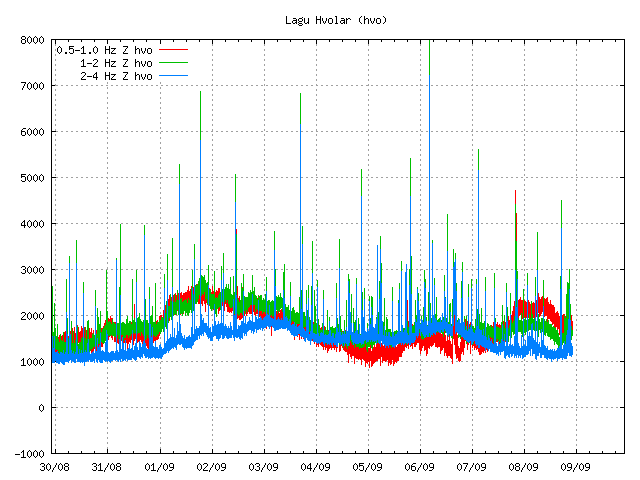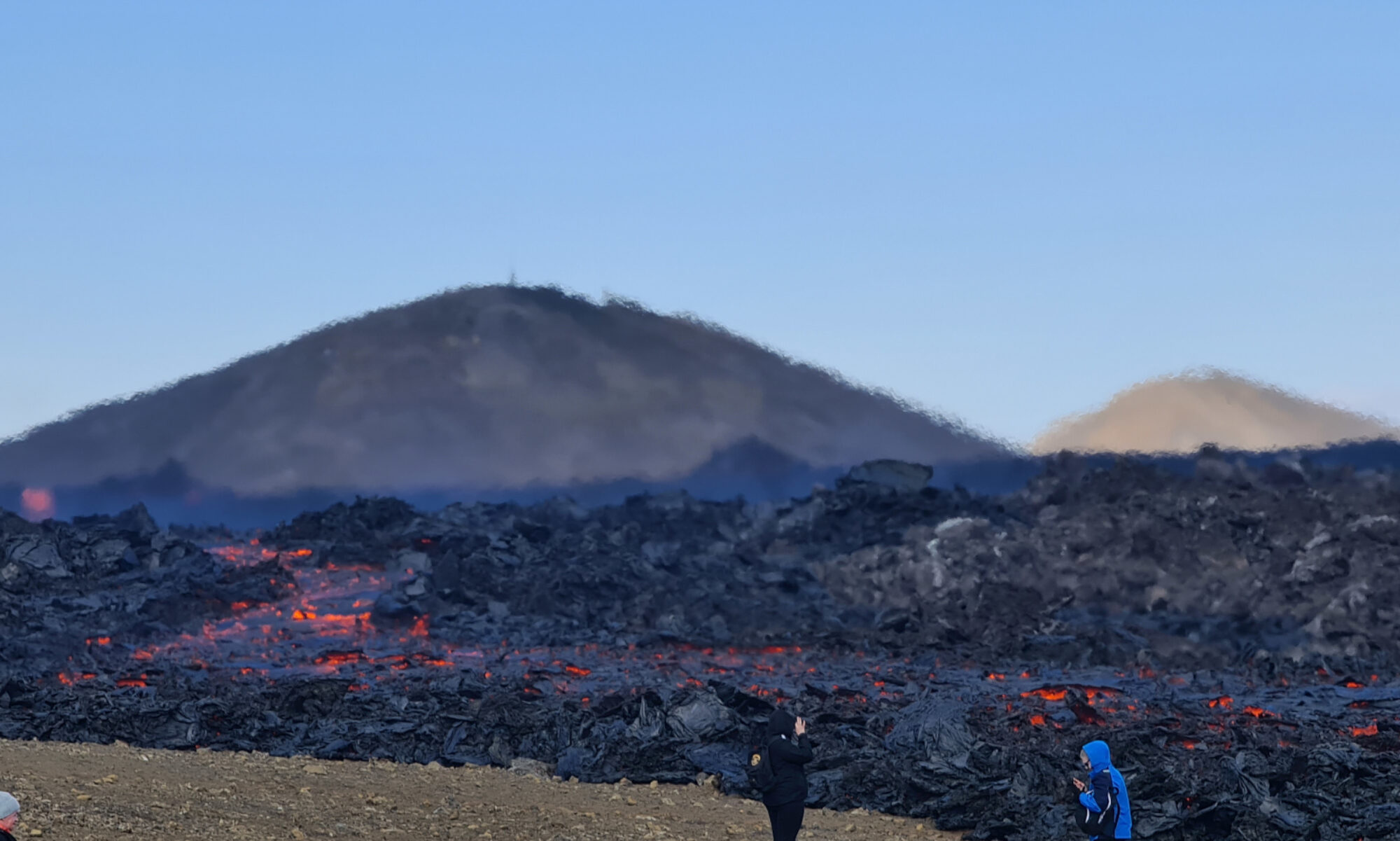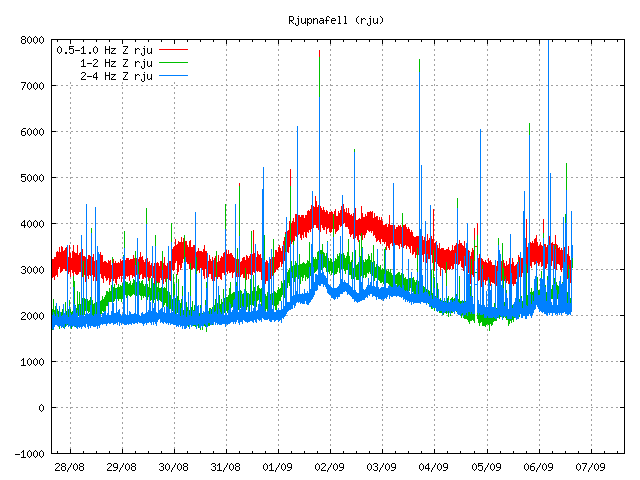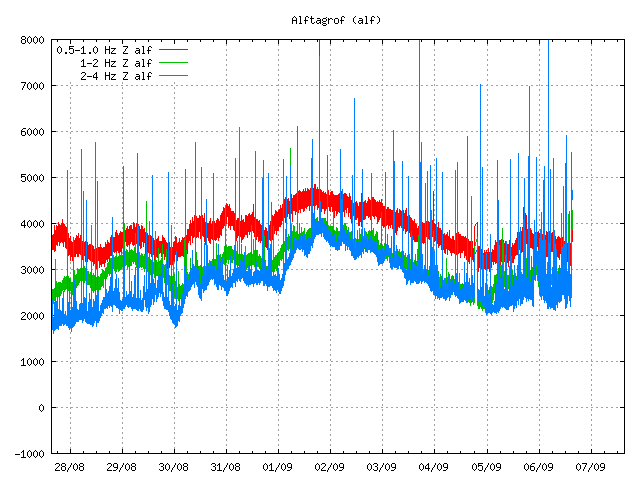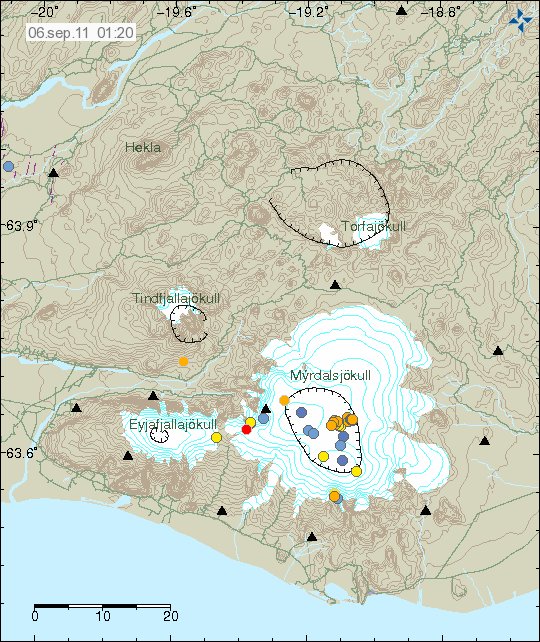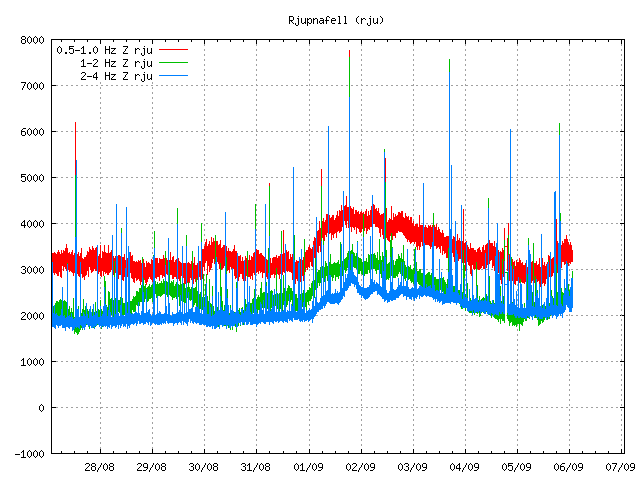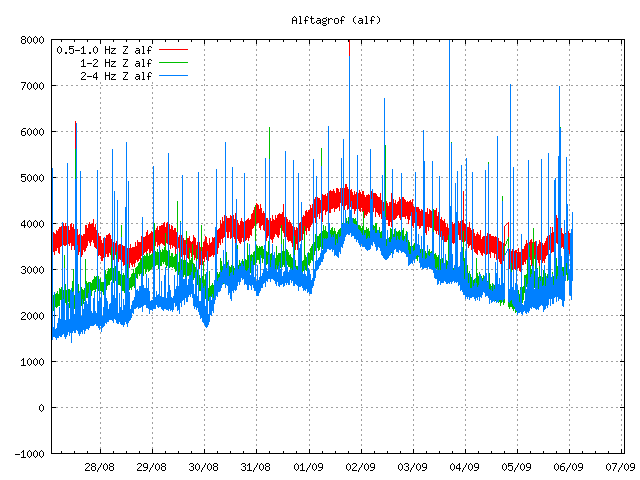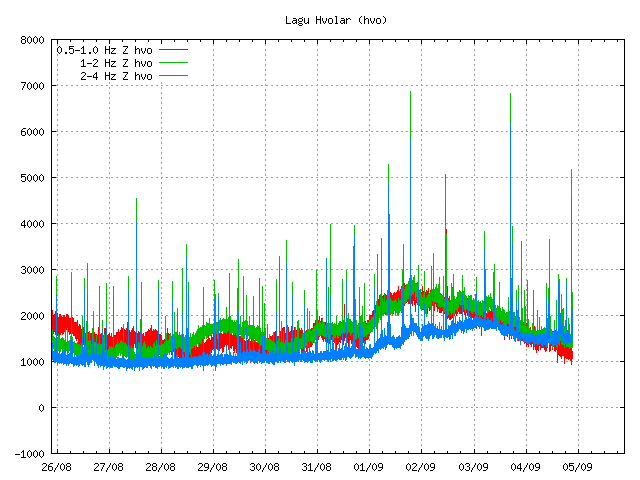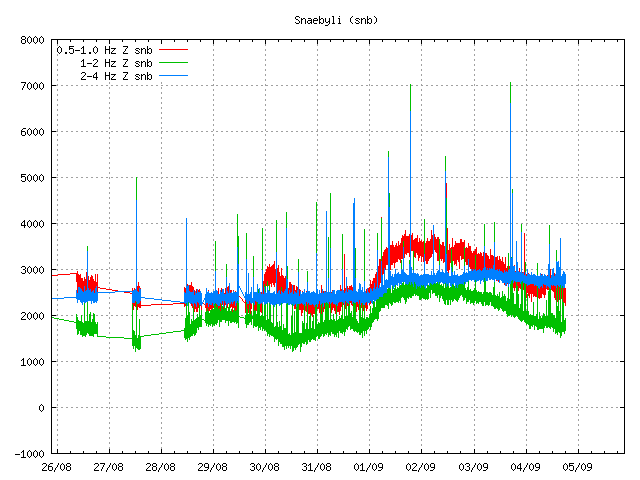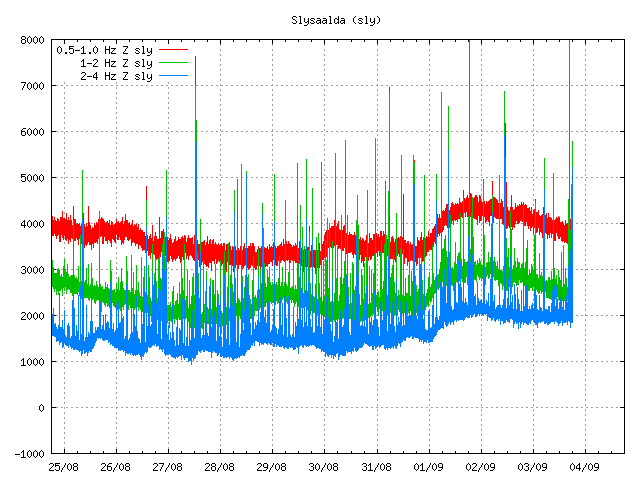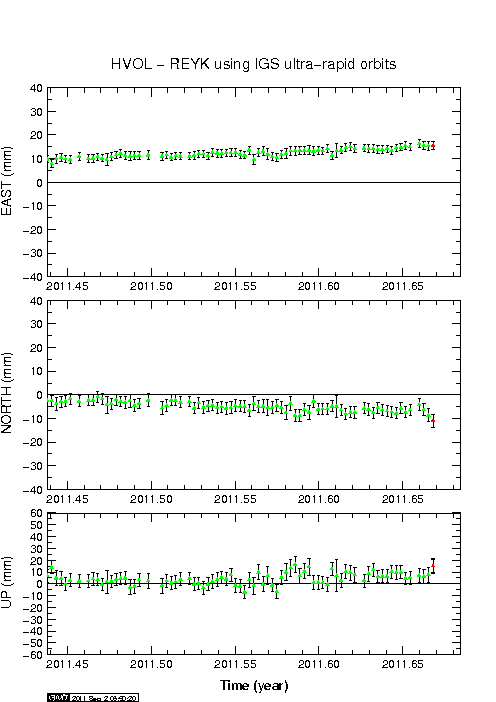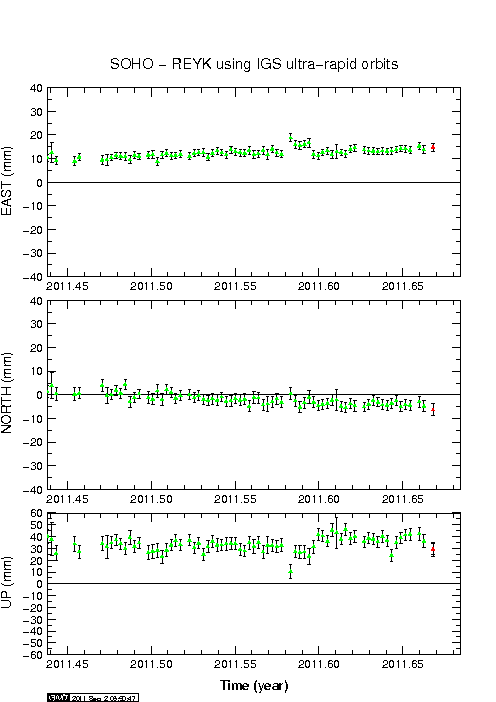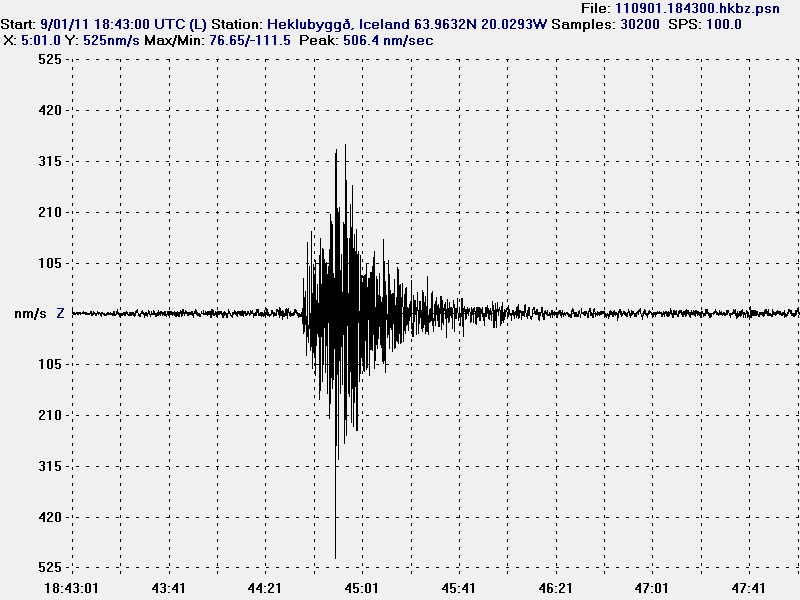While the source of the harmonic tremor yesterday in Katla volcano is not immanently clear. It is has been concluded that magma is on the move inside Katla volcano. It has been suggested that the harmonic tremor yesterday in Katla volcano is a mixture of both hydrothermal activity and water flows under the glacier. But hydrothermal activity has increased in Katla volcano since July and seems to be continuing on that path for now.
The earthquake activity in Katla volcano has been growing since July, when a sharp harmonic tremor spike did take place and was followed by a glacier flood that did destroy the Múlakvísl river bridge. But that flood did peak at ~5 meter high.
Currently the activity is quiet in Katla volcano. But that might be because the earthquakes are not being detected by the bad weather that is currently in this area (and all over Iceland for the fact).
Here is a overview of the change in activity since Week 34.

The earthquake activity in Katla volcano during Week 34. The number is the cauldron in Katla volcano. Notice the interesting earthquake activity in SE part of Katla volcano, well outside of the caldera area. Copyright of this picture belongs to Iceland Met Office.
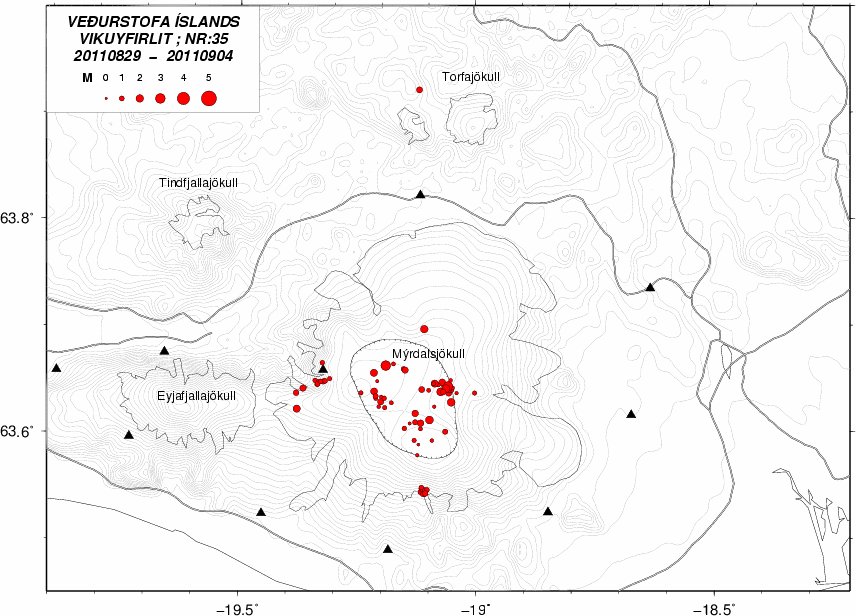
The earthquake activity in Katla volcano during week 35. The earthquake activity in SE part of Katla volcano continues at the same place. Copyright of this picture belongs to Iceland Met Office.
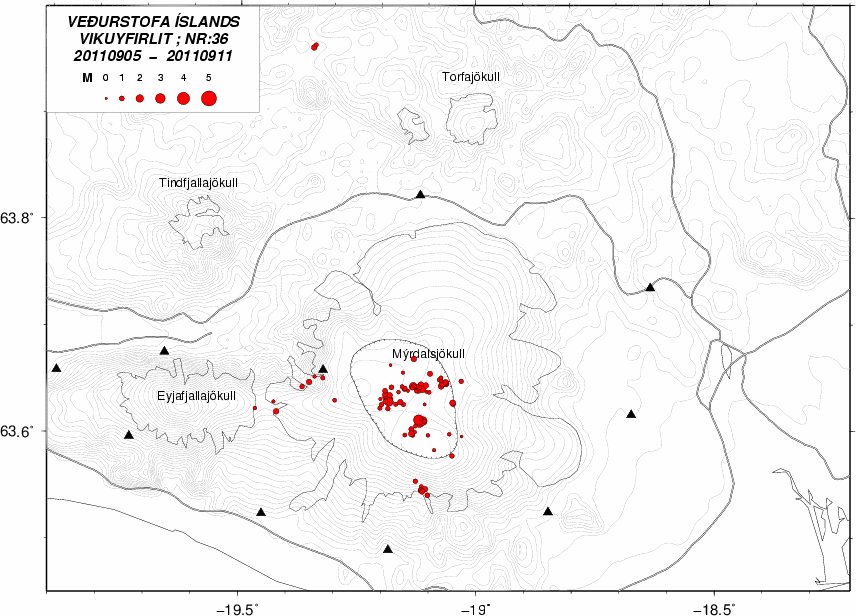
The earthquake activity in KAtla volcano during week 36 (current week, last updated today 7. September 2011). Earthquake activity in SE part of Katla volcano continues as before.Copyright of this picture belongs to Iceland Met Office.
Current activity in Katla volcano is quiet (less detection due the storm is also a factor in this). But that can change without any warning at all and at any time. But there is no reason to scaremonger what is going on in Katla volcano. It is a fact of life and cannot be changed. So the best way is to prepare if people live close to Katla volcano, or if you live far from Katla volcano the best thing is to monitor and learn from what is now happening in Katla volcano. Scare tactics do not any good and serve no purposive at all and never done so.
Icelandic news about the activity in Katla volcano. Use Google translate to understand. But be aware it is not approved by Santa.
Ekki ótvíræð merki um yfirvofandi gos (mbl.is, Icelandic)
Engin augljós skýring á óróa (mbl.is, Icelandic, 6. Sept, 2011)
Flogið yfir Kötlu (mbl.is, Icelandic, 6. Sept, 2011)
Kvika safnast saman undir Kötlu (Rúv.is, Icelandic)
Fylgjast með aukinni virkni í Kötlu (Vísir.is, Icelandic, Video in Icelandic, 6. Sept, 2011)
Jarðhiti aukist mjög mikið undir Kötlu (Vísir.is, Icelandic, 6. Sept, 2011)
Update 1: According to news the local emergency units and police have started to review the evacuation plans and emergency plans in the case of a eruption in Katla volcano.
News about that can be read here, if you risk Google Translate.
Fara yfir áætlanir um viðbrögð (mbl.is, Icelandic, 7. Sept, 2011)
Blog post updated at 00:43 UTC on 8. Sept, 2011.
